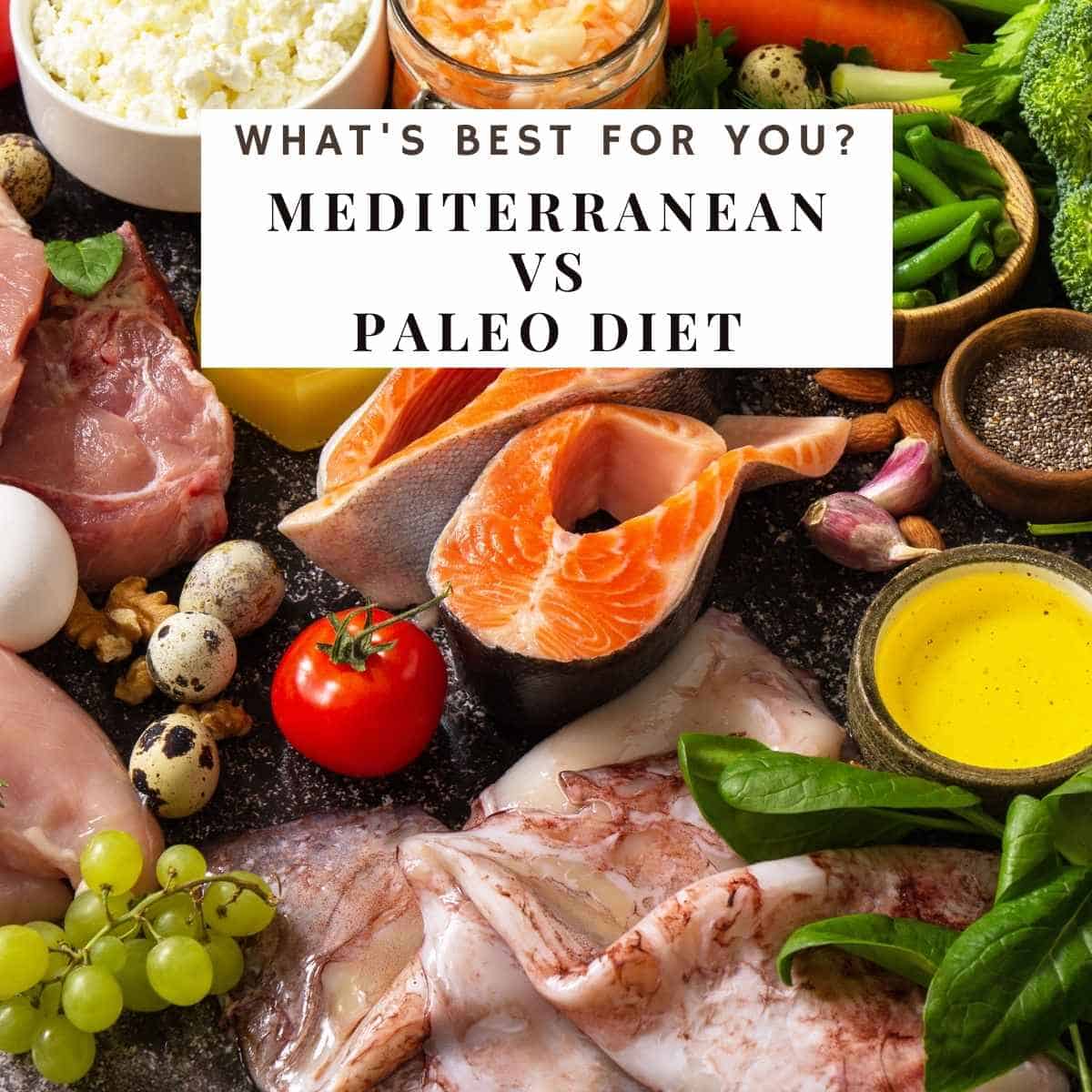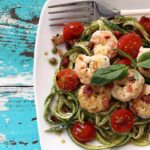Embark on a culinary journey merging the best of two worlds: the ancestral wisdom of the Paleo diet and the vibrant flavors of the Mediterranean. This isn’t just about following a diet; it’s about embracing a lifestyle that nourishes your body and tantalizes your taste buds. Imagine sun-drenched tomatoes bursting with sweetness, fragrant herbs releasing their intoxicating aromas, and the satisfying crunch of olives—all contributing to a balanced and delicious approach to healthy eating. Discover how this unique dietary approach combines lean proteins, healthy fats, and nutrient-rich vegetables to create meals that are as visually appealing as they are beneficial.
We’ll delve into the core principles of the Paleo Mediterranean diet, highlighting its unique blend of traditional approaches. You’ll learn how to craft balanced meals, utilizing a sample weekly meal plan as a guide. We’ll explore a collection of mouthwatering recipes, each meticulously detailed with step-by-step instructions, nutritional information, and creative variations to suit individual preferences. From breakfast delights to satisfying dinners, we’ll uncover the secrets to effortless meal preparation and smart storage strategies to minimize waste and maximize the benefits of this vibrant dietary approach.
Recipe Variations and Adaptations

The beauty of Paleo Mediterranean cuisine lies in its adaptability. The core principles—emphasizing whole, unprocessed foods—remain consistent, but the specific ingredients and preparation methods can be easily modified to suit various dietary needs and preferences, creating a vibrant tapestry of flavors and textures. This flexibility allows for personalized meal planning, ensuring everyone can enjoy the health benefits of this delicious and nutritious eating style.
This section explores three variations of a single Paleo Mediterranean recipe, highlighting potential substitutions to maintain nutritional value and accommodate diverse dietary needs. We’ll also examine the impact of these changes on the overall nutritional profile, ensuring you can make informed choices based on your specific requirements.
Paleo Mediterranean Chicken and Vegetable Skewers: Three Variations
This recipe, in its basic form, features marinated chicken pieces and an assortment of colorful vegetables, grilled to perfection. Imagine succulent chicken, imbued with the fragrant zest of lemon and oregano, nestled amongst vibrant bell peppers, juicy zucchini, and sweet red onions, all kissed by the warmth of the grill. The aroma alone is enough to transport you to a sun-drenched Mediterranean landscape. Below are three variations showcasing the versatility of this dish.
- Variation 1: Vegetarian Adaptation: Replace the chicken with firm tofu, marinated in the same lemon-herb mixture. The tofu absorbs the flavors beautifully, offering a satisfyingly firm texture. Nutritional impact: Protein source changes from animal-based to plant-based, reducing saturated fat and increasing fiber content. The overall calorie count might slightly decrease, while the protein content remains comparable. Visual: Imagine cubes of golden-brown tofu, glistening with marinade, nestled amongst the same vibrant array of vegetables. The contrast of textures between the soft tofu and the slightly charred vegetables is visually appealing.
- Variation 2: Increased Protein and Healthy Fats: Add grilled shrimp or salmon alongside the chicken. This boosts the protein and healthy omega-3 fatty acid content. Nutritional impact: Significant increase in protein and healthy fats, leading to enhanced satiety and improved cardiovascular health. The overall calorie count will increase, but this is balanced by the increased nutritional density. Visual: Imagine the vibrant skewers now featuring both succulent chicken and beautifully pink shrimp, glistening with a light olive oil glaze. The addition of the shrimp adds another layer of visual appeal, contrasting in both color and texture with the chicken and vegetables.
- Variation 3: Spice Variation for Enhanced Flavor: Incorporate a blend of smoked paprika, cumin, and chili flakes into the marinade. This adds a smoky, warm, and slightly spicy dimension to the dish, catering to those who prefer bolder flavors. Nutritional impact: The addition of spices does not significantly alter the macronutrient profile but enhances the overall flavor experience, potentially encouraging increased consumption of vegetables. Visual: The skewers, instead of their usual bright appearance, take on a more rustic and intense look due to the spices, creating a visually appetizing contrast of color and texture. The slightly darker hue of the marinated chicken and vegetables suggests a richer flavor profile.
Ingredient Substitutions in Paleo Mediterranean Recipes
Many ingredients can be substituted while maintaining the nutritional integrity of Paleo Mediterranean dishes. Understanding these substitutions allows for flexibility in meal planning and accommodates personal preferences or ingredient availability.
For instance, cauliflower rice can replace regular rice, offering a lower-carb, higher-fiber alternative. Sweet potatoes can be used in place of regular potatoes for a boost in vitamins and antioxidants. Olive oil remains the primary fat source, but avocado oil offers a viable alternative with a similar nutritional profile. Substituting certain herbs and spices allows for creative culinary exploration without compromising nutritional value.
Meal Planning and Preparation Strategies
Embracing a Paleo Mediterranean diet doesn’t require slaving away in the kitchen daily. Strategic meal planning and preparation are key to simplifying the process, ensuring adherence, and minimizing food waste. By dedicating a few hours each week to thoughtful preparation, you can enjoy delicious, healthy meals throughout the week without feeling overwhelmed. This section details effective strategies for meal planning, grocery shopping, and food storage, transforming your Paleo Mediterranean journey from a challenge into a manageable and enjoyable lifestyle.
Effective meal planning and preparation are crucial for successful adherence to any diet, but especially so for a Paleo Mediterranean diet which emphasizes fresh, whole foods. Pre-planning minimizes impulsive unhealthy choices and maximizes the nutritional benefits of your meals.
A Sample Weekly Paleo Mediterranean Meal Prep Plan
A well-structured meal plan, combined with a detailed grocery list, forms the foundation of efficient meal preparation. The following sample plan provides a framework you can adapt to your own preferences and dietary needs. Remember to adjust portion sizes based on your individual caloric requirements and activity levels.
| Day | Breakfast | Lunch | Dinner |
|---|---|---|---|
| Monday | Scrambled eggs with spinach and feta cheese | Leftover grilled chicken and vegetable salad with olive oil and lemon dressing | Baked salmon with roasted asparagus and sweet potatoes |
| Tuesday | Greek yogurt with berries and almonds | Large mixed green salad with chickpeas, olives, and a simple vinaigrette | Ground lamb meatballs with zucchini noodles and marinara sauce (made with Paleo-friendly ingredients) |
| Wednesday | Smoothie with avocado, spinach, and coconut milk | Leftover lamb meatballs and zucchini noodles | Chicken and vegetable skewers with a side of quinoa |
| Thursday | Coconut flour pancakes with berries | Tuna salad (made with mayonnaise from avocado oil) lettuce wraps | Roasted chicken thighs with roasted broccoli and Brussels sprouts |
| Friday | Scrambled eggs with mushrooms and tomatoes | Leftover roasted chicken and vegetables | Grilled shrimp with a large Greek salad |
| Saturday | Breakfast frittata with various vegetables | Leftover grilled shrimp and Greek salad | Homemade pizza on a cauliflower crust with Paleo-friendly toppings |
| Sunday | Baked apples with cinnamon and walnuts | Leftover pizza | Slow-cooked lamb stew with root vegetables |
Grocery List and Time-Saving Tips
Planning your grocery list in advance, based on your chosen meal plan, is essential for efficient shopping and prevents last-minute unhealthy impulse purchases. Consider creating a master list of your regular Paleo Mediterranean staples and simply checking off what you need each week. To save time, utilize online grocery ordering and delivery services or shop at farmers’ markets for fresh, seasonal produce. Pre-chop vegetables on the weekend to significantly reduce cooking time during the week.
Storing and Preserving Paleo Mediterranean Ingredients
Proper storage is vital to minimize food waste and maintain the freshness and nutritional value of your ingredients. Fresh herbs can be stored in a glass of water on your counter or frozen in ice cube trays with olive oil. Leafy greens should be stored in airtight containers lined with paper towels to absorb excess moisture. Many fruits and vegetables, like avocados, can be stored in the refrigerator to extend their shelf life. Properly storing and preserving ingredients will ensure they stay fresh and you get the most out of your purchases.
Batch Cooking for Simplified Adherence
Batch cooking is a game-changer for simplifying adherence to a Paleo Mediterranean meal plan. Dedicate a few hours on the weekend to prepare large batches of staple components like roasted vegetables, cooked grains (like quinoa or sweet potatoes), or protein sources like chicken or fish. These components can then be used throughout the week to create a variety of meals quickly and easily. For example, a large batch of roasted chicken can be used in salads, grain bowls, or as a standalone meal. This reduces cooking time during the week and prevents decision fatigue, promoting consistent adherence to your diet.
The Paleo Mediterranean diet isn’t just a fleeting trend; it’s a sustainable path to vibrant health and culinary adventure. By embracing the principles Artikeld here—the balance of wholesome ingredients, mindful meal preparation, and the joy of delicious, nutritious food—you’ll embark on a transformative journey towards a healthier, happier you. The vibrant colors, enticing aromas, and satisfying textures of these recipes will not only nourish your body but also enrich your daily life. Remember, this is more than just a diet; it’s a celebration of flavor, health, and the simple pleasure of nourishing yourself with wholesome, delicious food.
FAQ Explained
Can I still enjoy some fruits on the Paleo Mediterranean diet?
Yes, many fruits are allowed, focusing on lower-sugar options like berries and apples, consumed in moderation.
Are legumes allowed in a Paleo Mediterranean diet?
Traditional Paleo eliminates legumes, but some interpretations of the Paleo Mediterranean diet may include small amounts of lentils or chickpeas sparingly.
How much exercise is recommended while following this diet?
Regular physical activity, such as 30 minutes of moderate-intensity exercise most days of the week, is recommended to maximize the benefits of the diet.
What about dairy products?
Most Paleo Mediterranean plans avoid dairy, focusing on sources of calcium from leafy greens and other vegetables.
Is this diet suitable for everyone?
While generally healthy, it’s crucial to consult a healthcare professional or registered dietitian before making significant dietary changes, especially if you have underlying health conditions.


